The Green Horse section provides practical information on managing environmentally sustainable horse properties, readers stories and tips, as well as advice and articles from equestrian experts in their fields.
June July 2019
Vol 41 No 1
In this issue of The Green Horse you will find the following articles:
'PILE BURNING'
N‘Pile’ burns, burning of cut or stacked vegetation, are a way
to reduce future bush fire fuels and for property maintenance.
The NSW Rural Fire Service suggestions may help you safely burn excess fuel on your property.
MANAGING PASTURE
by Rhiannon Brown
Not everyone who owns a horse property has a farming background, so how do you achieve those healthy paddock so your horses will benefit.
New Biosecurity Regulations
YOUR PLACE - Stable Design -- Baxter Park Equestrian
by Wendy Elks
A well crafted, European-styled training facility.
HERBAL AWARENESS
by Catherine Bird for County Park Herbs.
Herbs assist in allowing the natural body functions to operate more efficiently and harmoniously, to resist the disease process and regain balance after illness or injury. Being labeled ‘natural’ however, does not mean they are a wonder cure or super food that will provide the answer to every ailment and they should still be used with awareness.
WIN A YEAR'S SUBSCRIPTION...
share your equine property management tips and each issue one reader will win.
Send ideas to -
The Green Horse Support <greenhorse@hoofbeats.com.au>
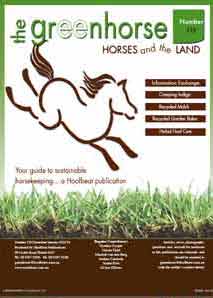
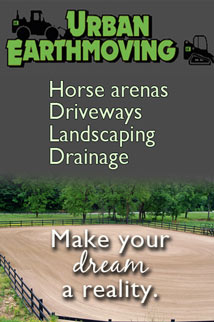
|
  
  

MANAGING PASTURE
Healthy pasture means
healthy horses
by Rhiannon Brown, Envirapest
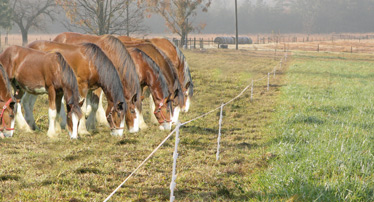
As horse owners we are continually told that having healthy paddocks means we will have healthy horses. A thick, lush pasture with no weeds means that your horses are winning, right?
But the question is, HOW do we actually do this?
For those with a farming background this might come easy, – but what about those of us who have finally landed the property of their dreams so they can raise and take care of their beloved horses – but have little or no background in managing pasture?
So, let’s try and break this down into layman’s terms.
Firstly, horses need to be thought of differently to other pasture animals. Cows, goats and sheep are all ruminant animals, which means they have a four-compartment stomach and can break down weeds and ‘non-desirable’ plants. This is why these animals tend to easily overgraze a paddock when given the chance because they will eat just about anything!
Horses, on the other hand, are non-ruminants, which means they are a lot more picky as they do not have a multi-chambered stomach! They tend to eat the better quality plants in the paddocks. They will hunt down the best grasses in the paddock first – which results in these plants having less chance, to seed and regrow before our horses are back to have another snack. This practice also means the weeds or ‘untasty’ plants are left and ignored – giving them the chance to seed and multiply. Pretty soon you are left with a paddock full of weeds, an unhappy horse and you have to spend a fortune in buying-in feed!
Once a paddock has been overgrazed it really does take a
long time to recover – especially if you’re not adding
seed or improving the soil.
So, if we can try and to prevent this from happening in the first place, things will be better in the future for maintaining quality pasture.
Strategic Fencing or Strip Grazing
Strip grazing is a technique that can be used in pastures of all sizes. The basic concept is that you break down one big paddock into smaller paddocks and rotate your horses through. It essentially allows you to have smaller paddocks at different stages of growth and recuperation. There are other benefits to this technique; it allows you to have smaller target areas where you can focus your weed control, fertiliser application and reseeding without the horses being in the paddock. They are happily grazing next door. During winter, when things get muddy, rotating the paddocks will give them a chance to dry out before those big hooves co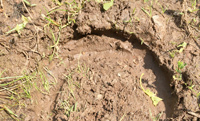 me stomping through again. me stomping through again.
One of the biggest wins for strip grazing is the fact that it allows you to rotate the horses when the grass it at its optimal stage of growth.
Horses get the most nutrition out of plants when they are in the growing stage, have developed their leaves and before they enter the process of going to seed. A good rule of thumb is to move the horses into a new paddock when the grasses are about 15 – 25cm high and move them out of it when they eat it down to around 7-10cm. This also means you are moving the horses before they damage the roots, which would make it harder for these plants to regrow.
Get On That Mower and Go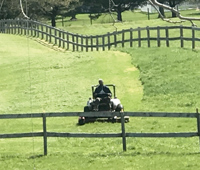
Mowing your pasture will also help the grasses to be more productive. If you have the ability to mow your pasture regularly it can actually encourage the growth of new grass shoots, which helps make the grasses more dense, which in turn out-competes the weeds. If you do have weeds in the paddock then mowing will also help to keep them from getting out of control and you will be cutting them off before they reseed.
If you can learn - and put into practice - some of these suggestions you will be able to have bountiful, healthy pasture on even the smallest areas of land, saving money on feed and having happier, healthier horses in general.
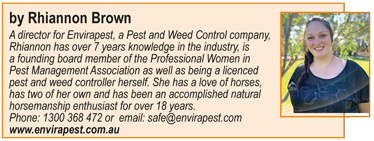
|